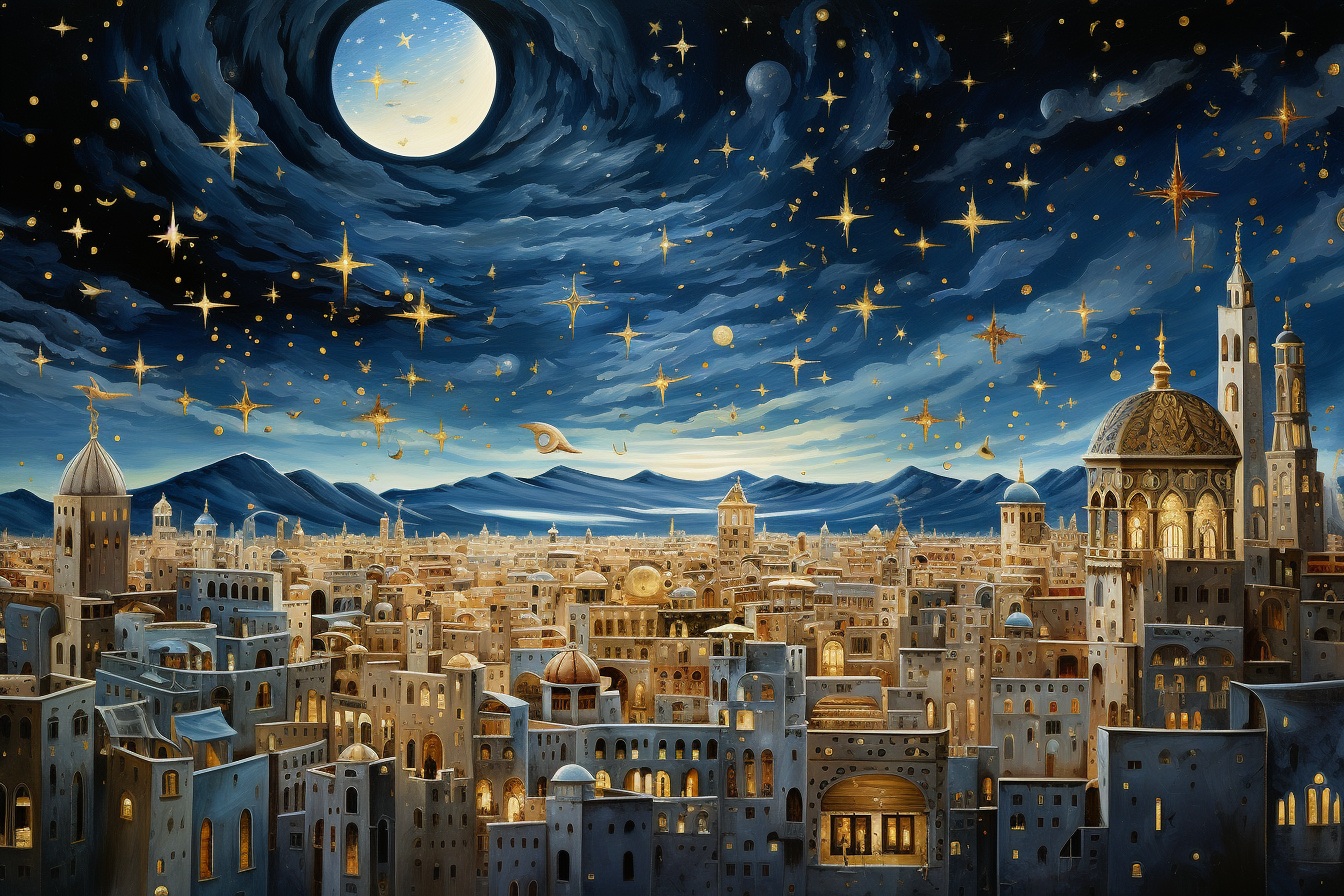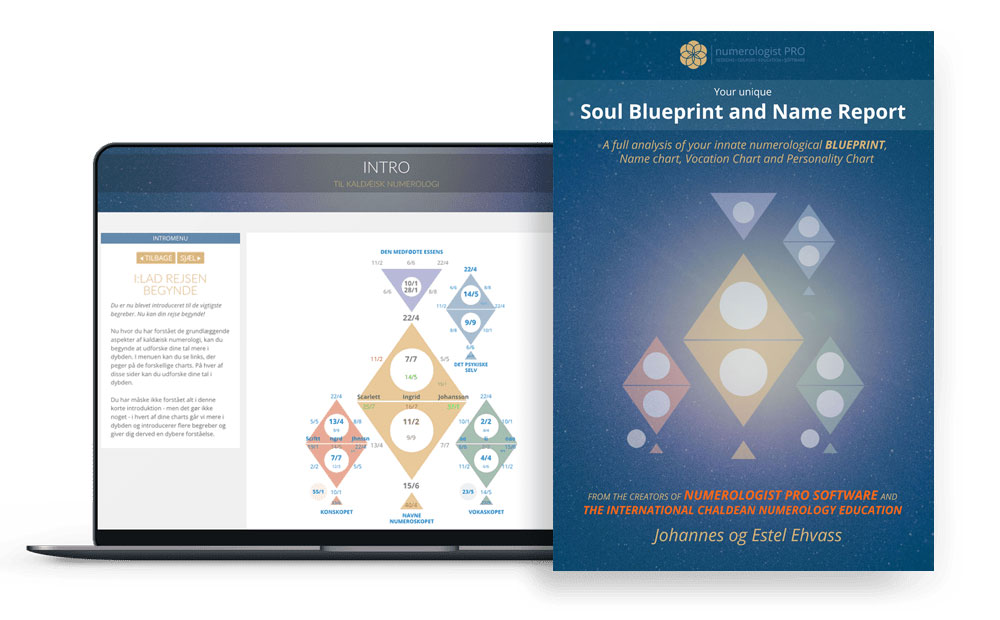Renaissance Astrology’s Echo in the Modern World

Estel Ehvass
Welcome, dear reader! The Renaissance marked a pivotal time for many disciplines, and astrology was no exception. As society rekindled its passion for the arts and sciences, so too did it revisit the stars. This era, renowned for its rebirth of knowledge, saw astrology intertwine with emerging scientific studies and the broader awakening of human curiosity. The cosmos, during this period, served not just as a guide for destinies, but also as a testament to humanity's relentless pursuit of understanding. Dive with me into this intriguing era, where stars and society found renewed harmony.
The Lasting Contributions: What Remains Relevant
Introduction: Tracing Lineages

Every epoch leaves an indelible mark on human understanding, and the Renaissance, with its vibrant collision of the old and new, is no exception.
Within this broad scope, the role of astrology during the Renaissance and its subsequent influence on modern perspectives is an engaging narrative.
This article delves into the lasting contributions of Renaissance astrology and discerns what elements remain relevant in today’s world.
Birth of the Individual Horoscope
Personalized Astrology
While the concept of the horoscope can be traced back to ancient Babylonian times, the Renaissance period saw an enhancement in the precision of individualized horoscopes. Thanks to advances in both astronomical observations and astrological interpretations, astrologers of the Renaissance could offer more personalized, nuanced insights based on exact birth details.
Resonance in Modern Times
Today, the personalized natal chart remains a cornerstone of astrological practice. Many seek guidance or insight from astrologers who, using the time, date, and place of birth, create bespoke charts and interpretations, a method deeply rooted in Renaissance innovations.
Planetary Dignities and Rulerships
Complex Layering of Influences
Renaissance astrologers expanded upon the existing framework of planetary rulerships, introducing the concept of planetary dignities. This intricate system mapped out each planet’s strength or weakness based on its position within a zodiac sign, adding depth to chart interpretations.
Current-Day Applications
Modern astrologers often incorporate these considerations of dignity and debility, enabling a deeper understanding of a planet’s influence in a particular sign. This richer interpretation aids in creating holistic and detailed horoscopic readings.
Medical Astrology’s Renaissance Flourish
Melding Medicine and the Heavens
During the Renaissance, the intertwining of astrology with medicine reached a peak. Astrologers believed celestial bodies influenced human health, guiding medical practitioners in diagnosis and treatment.
Legacy in Holistic Health
While mainstream modern medicine has parted ways with astrological considerations, segments of alternative and holistic health practices still entertain the influence of celestial bodies on human well-being. Some contemporary practitioners use birth charts to understand predispositions and guide wellness recommendations.
Alchemy and Astrology: Twin Sciences
A Shared Philosophy
The Renaissance period saw a profound connection between alchemy and astrology. Both were deemed to operate on the principle of “As Above, So Below,” suggesting a mirror relationship between the macrocosm (universe) and microcosm (individual).
Alchemy’s Transformation into Chemistry
While alchemy eventually paved the way for modern chemistry, vestiges of its astrological links remain. Some holistic practices and spiritual traditions continue to recognize the intertwined nature of celestial movements and earthly transformations.
Revival of Hellenistic Techniques
Rediscovering Ancient Wisdom
Renaissance astrologers were instrumental in reviving and incorporating Hellenistic techniques into their practices, bridging ancient wisdom with contemporary understanding.
Modern Hellenistic Astrology
There’s been a resurgence of interest in Hellenistic astrology in recent decades. Modern astrologers often turn to ancient texts and methods to enhance and deepen their practice, a clear nod to Renaissance astrologers’ efforts.
Conclusion: The Timeless Tapestry
The interplay between the Renaissance’s rediscovery of ancient knowledge and its innovative contributions has bequeathed a rich legacy. While the context has shifted, and the practice of astrology has continued to evolve, the essence of many Renaissance contributions endures. These age-old insights, refined and reimagined during the Renaissance, continue to inform and enrich the world of modern astrology.
Renaissance Astrology in Contemporary Thought and Practice
Introduction: The Renaissance Bridge
In the vast chronology of astrological practice, the Renaissance era stands out as a monumental period of rediscovery, refinement, and redefinition. Its influence has trickled down, subtly but significantly influencing how contemporary astrologers approach their craft. Let’s delve into how Renaissance astrology is manifested in today’s astrological thought and practice.
The Integrated Worldview
Harmony of Macrocosm and Microcosm
One of the foundational beliefs of Renaissance astrology was the interconnectedness of the universe (macrocosm) and the individual (microcosm). This notion, deeply rooted in Hermetic philosophy, posits that the patterns of the heavens are intimately linked to events on Earth.
Modern Implications
Today’s astrologers, whether they’re advising on personal matters, global events, or even financial markets, often operate from this integrated worldview. This holistic perspective, valuing both celestial and terrestrial phenomena, is a direct inheritance from Renaissance thought.
Elective Astrology’s Contemporary Reverberations
Renaissance Precision
Elective astrology, which involves choosing the most auspicious time to undertake an activity, was refined to an art in the Renaissance. The period saw an obsession with timing, using precise astrological alignments to dictate actions from coronations to surgeries.
Modern-Day Applications
Today, while we might not lean on astrology for surgical timings, elective astrology flourishes in areas like choosing wedding dates, business launches, or even initiating important life events. This practice’s continued relevance underscores the enduring impact of Renaissance advancements.
The House System Debate
Pluralism in Renaissance Practice
Renaissance astrologers didn’t adhere strictly to one house system (a method of dividing the sky relative to the birthplace and time). Instead, there was a plurality of methods, with the Alcabitius, Regiomontanus, and Placidus systems being among the most popular.
Contemporary Echoes
The debate over which house system to use continues to be a hot topic in astrological circles today. Modern astrologers often have personal preferences, influenced in part by the varied traditions inherited from the Renaissance.
Traditional Rulerships and Dignities
Reverence for Ancient Systems
While the Renaissance was a period of innovation, it also saw a deep respect for ancient rulerships and dignities – where planets were deemed to have their ‘domiciles’ or places of strength.
Modern Utilization
Today, even with the discovery of new celestial bodies like Uranus, Neptune, and Pluto, many astrologers still prioritize traditional rulerships in their readings, a nod to the period’s influence.
Renaissance Predictive Techniques
Profections, Returns, and Firdaria
The Renaissance was rich in predictive techniques. Systems like profections (a method of moving the Ascendant one sign per year), solar returns (the yearly chart cast for each birthday), and Firdaria (a Persian time-lord system) were essential tools for astrologers of the era.
The Contemporary Renaissance
In the late 20th and early 21st centuries, there has been a revival of these techniques, as astrologers look back to move forward. Workshops, books, and courses on these topics are now commonplace, emphasizing the timelessness of Renaissance contributions.
Conclusion: A Legacy Alive and Well
While the contexts, tools, and sometimes even the objectives of astrology have transformed over time, the foundational techniques and philosophies of the Renaissance era remain ever-present in contemporary astrological practice. By recognizing and honoring these roots, modern astrologers ensure that the wisdom of the past continues to enrich the present and future of the discipline.
Modern Reception: Celebrating and Critiquing Renaissance Astrological Works
Introduction
The Renaissance, known for its profound advancements in art, science, and philosophy, also played a pivotal role in the evolution of astrology. Today, as we reflect on Renaissance astrological works, we recognize both the reverence and critique they inspire. Their enduring legacy remains a topic of discussion, debate, and analysis.
Admiration for Renaissance Astrological Mastery
Recognition of Scholarly Rigor
Contemporary astrologers often look back in admiration at the intellectual rigor of Renaissance astrologers. The synthesis of ancient texts, combined with the innovations of the time, showcases a depth of scholarship that remains awe-inspiring. Their dedication to source texts, translation efforts, and the creation of comprehensive astrological treatises are frequently lauded in modern times.
Revival of Traditional Techniques
In recent years, there’s been a noticeable resurgence in traditional astrological techniques, many of which find their roots in Renaissance practices. This revival, particularly in the realms of horary and electional astrology, is a testament to the enduring validity and precision of Renaissance methodologies.
Critiques and Reassessments
The Challenge of Determinism
One criticism often directed at Renaissance astrology is its deterministic outlook. The idea that celestial configurations can decisively determine one’s fate is a perspective some modern astrologers find restrictive, preferring a more psychological and symbolic interpretation of celestial events.
Renaissance Cultural Context
Modern critiques often emphasize the need to understand Renaissance astrological works within their cultural, political, and religious contexts. What might have been seen as universally relevant during the Renaissance may not hold the same universalism today, given the socio-cultural shifts over the centuries.
The Role of Modern Technology
Digital Archives and Access
The digitization of ancient manuscripts and Renaissance texts has democratized access to these works. This digital revolution has allowed a wider audience to engage with, celebrate, and critique the contents of these pivotal astrological treatises.
Software and Chart Calculations
The advancement of astrological software has transformed the way astrologers interact with Renaissance techniques. While Renaissance astrologers relied on intricate hand-drawn charts and ephemerides, today’s astrologers can calculate and analyze charts with unparalleled speed, allowing for a deeper and broader exploration of Renaissance methodologies.
Renaissance Astrology in Education
Academic Curricula and Research
Institutions offering courses in the history of astrology often prioritize the Renaissance period given its significance. Through academic inquiry, students are encouraged to both appreciate the mastery and critically analyze the limitations of Renaissance astrological works.
Workshops and Conferences
The modern astrological community frequently hosts workshops and conferences that delve into Renaissance techniques. These events serve as platforms for debate, learning, and the sharing of interpretative skills inspired by Renaissance practices.
The Interplay of Art and Astrology
Modern Artistic Representations
The symbiosis of art and astrology, so prominent in the Renaissance, continues to influence contemporary artists. Whether through visual arts, literature, or performing arts, modern creators draw inspiration from Renaissance astrological themes, offering both homage and reinterpretation.
Conclusion: A Dynamic Relationship with the Past
The Renaissance, with its rich astrological tapestry, is not merely a chapter in history but a living legacy in the modern astrological landscape. As contemporary astrologers engage with the works of this era, they do so with a blend of reverence and critical inquiry, ensuring that the dialogue between past and present remains both vibrant and insightful.

Johannes & Estel: Renowned authorities in Numerology, Astrology, and the esoteric arts. As the founders of Scandinavia's premier Numerology school, we're delighted to share our insights through this curated series on astrology. Dive in and discover the stars.
The Worlds Most Advanced Numerology Report

Your birthdate reveals your unique life purpose, potentials, talents, weaknesses, and karma in this life.
Your names show what you attract into your life regarding your career, relationships, happiness, money, and success.
GET THE REPORT HERE
Introduction to Astrology
The history of Astrology
Moving beyond deterministic astrology
Foundation of Astrology: Planets, Signs and Houses
Astrology and the Holographic Universe
The Holographic Universe
The Human Psyche as a Mirror to The Solar System
The Human Body as a Mirror to The Star Signs
Astrology Background
Egyptian Astrology
Mayan Astrology
Chinese Astrology
Indian Astrology - Jyotish
Celtic Astrology
Tibetan Astrology
Mesopotamian Astrology
Early Mesopotamian Astrology: The Dawn of Celestial Divination
Enuma Anu Enlil: The Epicenter of Babylonian Celestial Omen Interpretation
Babylonian and Chaldean Astrology
Babylonian and Chaldean Astrology
Chaldean influence and evolution
Chaldean Wisdom: Safeguarding and Transmitting Astrological Knowledge
Hellenistic Astrology
Hellenistic Astrology background
Claudius Ptolemy and Tetrabiblos
Vettius Valens
Dorotheus of Sidon
Persian Astrology
Persian Astrology background
Sassanian Astrology
Late Antiquity and The Transition Period
Late Antiquity and The Transition Period
Hellenistic to Islamic Transition: The Torchbearers of Astrological Wisdom
Islamic Golden Age
Arabian Astrology Background
Arabian Astrology Contributions
Medieval Astrology
Introduction: The Medieval Cosmos
Monastic Preservers: Astrological Knowledge in the Dark Ages
Astrology in Medieval Medicine
Kings, Queens, and Constellations: Astrology in the Medieval Court
The Church and the Stars: A Contentious Relationship
Universities and Scholastic Pursuits: Academic Astrology
Astronomy & Astrology: Tools of the Trade
Medieval Astrological Houses and the Synthesis of Traditions
Transition to the Renaissance: Humanism and the Celestial Arts
Reflections: Medieval Astrology's Echoes in Modern Practice
Astrological Art of the Middle Ages
Famous Medieval Astrologers
Medieval Astrological Texts
Renaissance Astrology
Renaissance Humanism and Astrology
Scientific Advancements and Astrology
The Social Fabric: Astrology in Everyday Renaissance Life
Court Astrologers of the Renaissance
Controversies and Conflicts: Astrology Under Scrutiny
Renaissance Texts and Authors: Continuation of a Tradition
Astrology and Art: Celestial Imagery in the Renaissance
Renaissance Astrological Practices: Evolutions and Innovations
End of the Renaissance: The Gradual Decline of Astrological Influence
Renaissance Astrology's Echo in the Modern World
Enlightenment Astrology
Introduction: The Enlightenment and Astrology
Challenging the Stars: Astrology's Critics during the Enlightenment
Astrology and the New World
Astrology in the 19th Century
The Dawn of Psychological Astrology
Astrology in the 20th Century: A Modern Renaissance
Astrological Associations and Schools
Modern Controversies and Astrology
Astrology and Popular Culture
Astrology and Technology
Current Trends and Future Directions in Astrology
Conclusion: Reflecting on Astrology's Evolution
The Planet Significances
The Sun in Astrology
The Moon in Astrology
Mercury in Astrology
Venus in Astrology
Mars in Astrology
Jupiter in Astrology
Saturn in Astrology
Uranus in Astrology
Neptune in Astrology
Pluto in Astrology
Chiron in Astrology
Black Moon Lilith in Astrology
Pars Fortuna in Astrology
Ceres in Astrology
Houses in Astrology
Introduction to Astrological Houses
The Angular Houses
The Succedent Houses
The Cadent Houses
The 1st House
The 2nd House
The 3rd House
The 4th House
The 5th House
The 6th House
The 7th House
The 8th House
The 9th House
The 10th House
The 11th House
The 12th House
Interaction Between Houses
Derived Houses, House Rulers, and Interceptions
Conclusion: Synthesizing House Knowledge
All Materials © 2023 & 2024 Numerologist PRO
Terms of Service: Information provided by Numerologist PRO and/or from this web site is not intended as advice (medical, psychological, financial or other), nor is it intended to replace your work with a qualified professional (medical or otherwise). You should maintain your relationship with your providers and consider the services of this site as informational only. Any information, stories, examples, or testimonials presented on this website do not constitute a warranty, guarantee, or prediction regarding the outcome of an individual. This web site is a sharing of knowledge and information of numerology/energy work based on the experiences of Numerologist PRO. You are encouraged to make your own decisions based on your own research and inner guidance. By booking and receiving services, you agree to fully release and hold harmless Numerologist PRO and all it's affiliated numerologists from and against any liability or claim that may arise out of or in connection with their service(s).
Numerologist PRO © 2021

CONTACT
numerologist@numerologistpro.com
LIKE US, and get free numerology tools, info about your personal numbers, best business dates of the year - and more!
YOUR FREE NUMEROSCOPE CHART
Enter your name and email below and get access to our free online numerology chart tool.